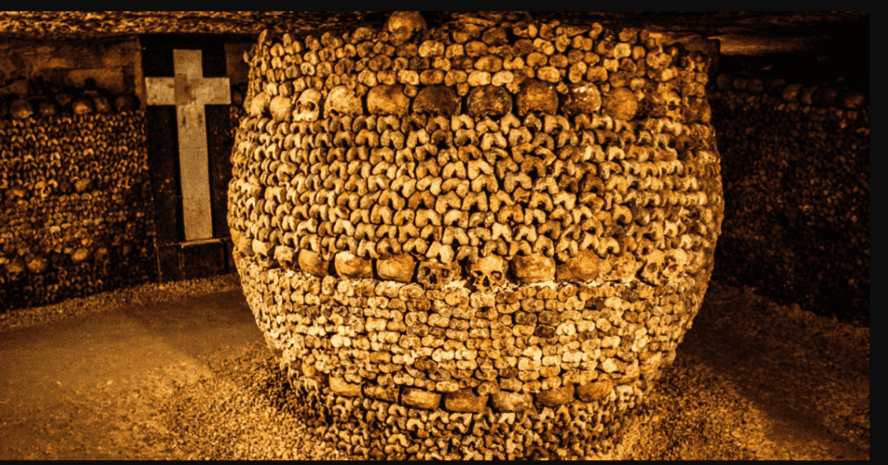Imagine standing in a dimly lit tunnel, your fingertips brushing against cool limestone walls that have witnessed centuries of history. The air is still, carrying the weight of time and the whispers of millions who came before you. This isn’t fiction—this is the reality of the world’s most mysterious catacombs, hidden beneath the cities where people just like us once lived, loved, and eventually found their eternal rest.
The Paris Catacombs: A City of the Dead Beneath the City of Light
In 18th century Paris, the stench of death hung heavy in the air. The Saints-Innocents Cemetery, used for over a thousand years, was literally overflowing. Bodies stacked in mass graves created not just an overwhelming odor but a genuine public health crisis.
Picture yourself as a Parisian of that era, stepping carefully through streets where the very ground beneath your feet contained generations of ancestors. What would you have thought when authorities announced their solution—moving millions of remains into the abandoned limestone quarries beneath the city?
Starting in 1786, workers began the grim task of transporting countless bones underground. Night after night, under cover of darkness, they moved the dead to their new home. Imagine being one of these workers, carrying cart after cart of human remains through torch-lit streets, the rattling of bones accompanying your every step.
Today, walls of meticulously arranged skulls and femurs create patterns that are both artistic and haunting—a testament to how our ancestors found beauty even in death’s shadow.
The Underground Heartbeat of Revolution
The catacombs weren’t just for the dead. During the French Revolution, these passageways likely echoed with whispered plans of rebellion. As battles raged above during World War II, both Nazi soldiers and French Resistance fighters navigated these same tunnels, their footsteps following paths worn by 18th-century bone-carriers.
And the mysteries continue. In 2004, police discovered a fully equipped underground movie theater, complete with a bar and electrical wiring. When they returned with reinforcements, everything was gone except a cryptic note: “Do not try to find us.” Who were these modern catacomb dwellers? What other secret societies exist beneath the city streets today, following in the footsteps of centuries of underground dwellers?
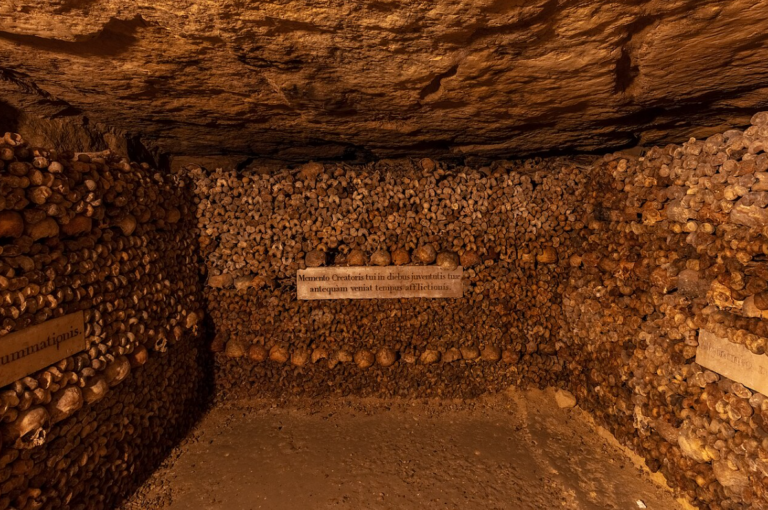
Rome’s Catacombs: Ancient Highways of Faith and Death
When Roman law forbade burial within city walls, early Christians and Jews faced a dilemma. Where would they lay their dead to rest? Their solution would become one of history’s most impressive engineering feats—a vast network of underground burial chambers stretching for over 170,000 tombs.
Imagine yourself as an early Christian in ancient Rome, descending narrow stairs cut into soft tufa rock, a small oil lamp casting long shadows on the walls. The air grows cooler as you enter a secret world, away from persecution above. Here, your community can gather around the remains of loved ones, perhaps sharing bread and wine in their memory during funerary feasts.
In the Crypt of the Popes, nine early church leaders found their rest. Nearby lies Saint Cecilia, the patron saint of music, her tomb depicting her exactly as she was found centuries after her death—seemingly asleep rather than claimed by time.
What thoughts went through the minds of those who carved these passageways by hand? What prayers were whispered in these chambers when Rome still worshipped Jupiter and Mars above ground?
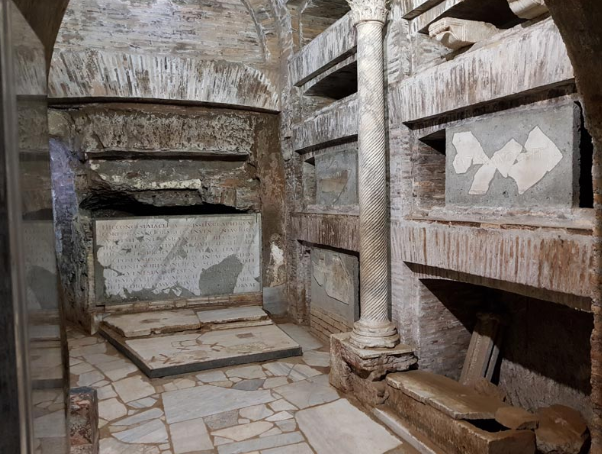
Odessa’s Forgotten Depths: A Labyrinth of Resistance
While Paris and Rome’s catacombs were built for the dead, Odessa’s originated as limestone quarries. Yet these 1,500 miles of tunnels—longer than the distance from New York City to Miami—have witnessed more than their share of human drama.
During World War II, Ukrainian partisans moved through these dark corridors like ghosts, emerging to attack Nazi forces before vanishing again underground. Picture yourself as one of these resistance fighters, memorizing twists and turns that could mean the difference between life and death, the sound of German boots patrolling overhead.
These tunnels have swallowed many souls. Consider the tragic story of Masha, a teenager who wandered into the catacombs after a New Year’s Eve party in 2005 and never found her way out. Her discovery weeks later only deepened the mystery of what lies in the unmapped reaches of this underground maze. According to Wikipedia, the official Odessa Catacombs website dismisses this story as a hoax. Truth or legend? Maybe that’s part of what makes the catacombs so fascinating – the line between fact and folklore gets blurry when you’re dealing with 1,500 miles of mostly unmapped darkness.
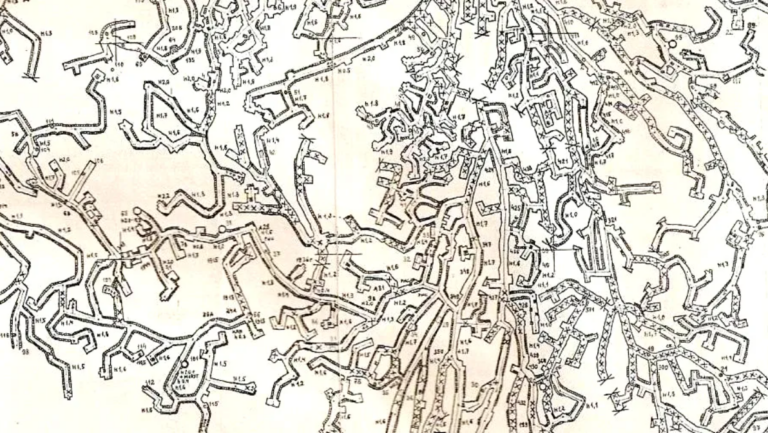
The Capuchin Crypts of Palermo: Where Death Stands Dressed in Sunday Best
In Palermo, death wears its finest clothes. Unlike other catacombs where remains are hidden away, the Capuchin monks created something entirely different—a macabre display where thousands of preserved bodies stand upright, dressed in their best attire, as if frozen at an eternal gathering.
Imagine being a 16th-century Palermitan, visiting deceased relatives who still appear present in form if not in spirit. You might brush dust from their clothing, straighten a crooked hat, or whisper news of family matters to ears that no longer hear.
Most haunting of all is little Rosalia Lombardo, who died in 1920 at just two years old. Her preservation is so perfect that her eyelashes remain intact, her golden curls still rest naturally against her pillow. Walking past her small glass coffin, generation after generation of visitors have felt the same sharp pang of sorrow that her parents must have experienced a century ago.
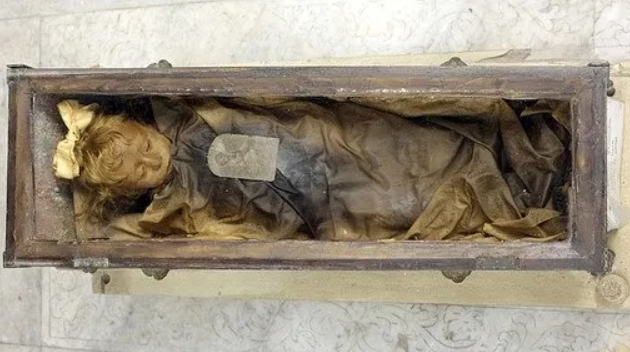
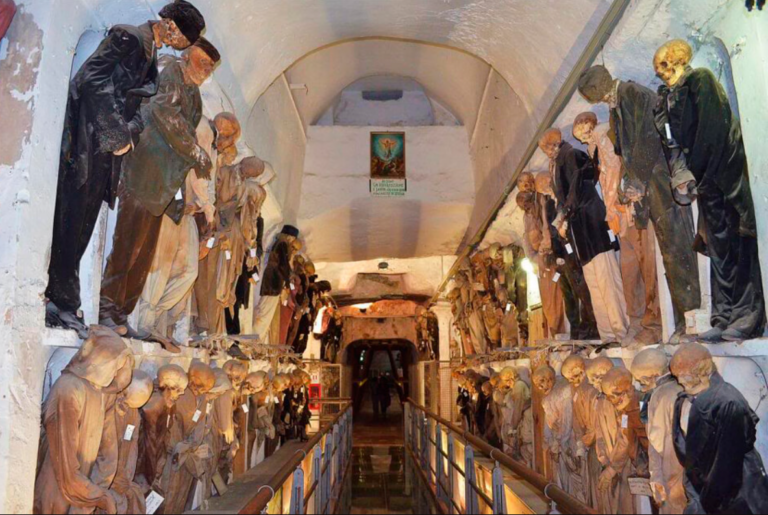
Naples’ Fontanelle Cemetery: Where the Living Adopted the Dead
Perhaps the most unusual relationship between the living and dead emerged in Naples. When plagues, famines, and wars overwhelmed the city’s cemeteries in the 17th century, thousands of anonymous remains were piled into a vast cave system.
But then something remarkable happened. Neapolitans began “adopting” these nameless skulls, giving them identities, polishing their craniums, and leaving gifts. Imagine choosing a skull from among thousands, feeling inexplicably drawn to these particular remains. You might bring flowers, coins, or small tokens, whispering prayers and requests to your chosen skull, believing its spirit could help you from beyond.
This intimate connection between the living and dead persisted well into the 20th century. Despite church disapproval, many still secretly visit their adopted skulls today. What does it tell us about humanity’s need for connection that even death cannot sever these bonds?
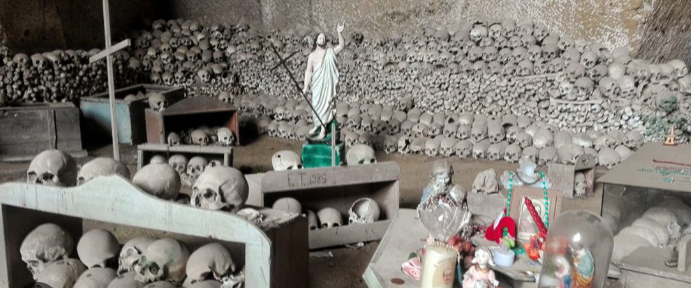
Kom El Shoqafa: Where Three Civilizations Meet in Death
In Alexandria, a donkey’s misstep in 1900 revealed one of archaeology’s most fascinating discoveries—a catacomb where Egyptian, Greek, and Roman cultures blend in stone. This fusion of traditions offers us a rare glimpse into a time when Alexandria truly was a melting pot of the ancient world.
Picture yourself as a resident of this cosmopolitan city in the 2nd century AD. Perhaps your family practiced Egyptian burial traditions but had embraced Greek philosophy and Roman customs. The tombs at Kom El Shoqafa would reflect this cultural mosaic—statues in Greek togas surrounded by Egyptian symbols, Roman mosaics depicting scenes from multiple mythologies.
Who were these people who created such a unique resting place? Were they perhaps members of a secretive cult, one that found common ground between these distinct civilizations? Their tombs remain, but their stories are lost to time.

Malta’s Hypogeum: Echoes From a Forgotten World
Before the pyramids of Egypt, before Stonehenge, the people of ancient Malta carved an extraordinary underground sanctuary. The Hypogeum of Ħal Saflieni dates back to around 4000 BCE, making it one of humanity’s oldest architectural achievements.
Imagine the determination of these prehistoric builders, using only primitive tools to carve this three-level labyrinth from solid rock. By firelight, they created chambers and passages that would house thousands of their dead, many placed in fetal positions as if awaiting rebirth.
In the Oracle Room, a male voice resonates throughout the entire complex—a phenomenon these ancient people surely noticed and perhaps incorporated into their ceremonies. What rituals took place here? What beliefs guided these people who lived so long before written history? The elongated skulls discovered in 1902 only deepen the mystery.

San Francisco Catacombs of Lima: Peru’s Spiral Puzzle
Beneath Lima’s San Francisco Monastery, bones are arranged in circular patterns unlike any other catacomb in the world. Imagine being tasked with creating these spiral pits containing 25,000 bodies. Was this simply practical, or did these circular arrangements hold deeper meaning—eternity, perhaps, or some religious symbolism now forgotten?
These catacombs connected to tunnels running beneath the city, some reportedly reaching all the way to the presidential palace. Picture yourself as a 17th-century monk, knowing of secret passages beneath your feet that could provide escape in times of danger. What other purposes might these hidden pathways have served?

The Eternal Question: Why?
What compels humans across different times, continents, and cultures to create these elaborate underground worlds for the dead? Standing in any of these catacombs today, we feel a profound connection to those who came before us—people who, like us, faced mortality and sought meaning in what lies beyond.
Our ancestors who built these catacombs looked up at the same stars we see today. They felt the same sun on their skin. They loved, they grieved, they wondered about what happens after death. And in creating these extraordinary underground chambers, they left us clues to how they lived—not just how they died.
Perhaps that’s what makes these places so compelling. They’re not just tombs but time capsules containing humanity’s eternal questions. When we descend into these depths, we’re not just visitors—we’re participants in a conversation that has spanned millennia, whispered from bone to bone, generation after generation, about the mystery that awaits us all.

